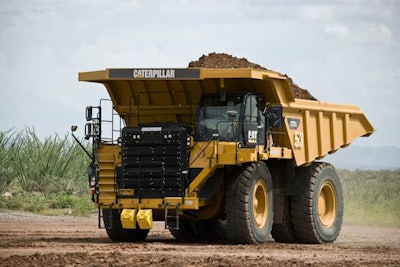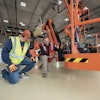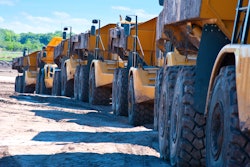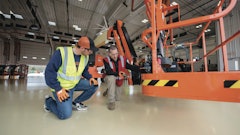
Caterpillar and Luck Stone have reached a significant milestone at the Bull Run Quarry in Chantilly, Virginia – one million tons hauled using autonomous haul trucks. The achievement marks a first for Caterpillar in the aggregates industry and signals growing potential for autonomous technology in quarry operations.
The project, which began as a collaboration between the two companies, tested Caterpillar’s autonomous haulage system (AHS) outside of traditional large-scale mining and into a quarry environment. Bull Run became the first aggregates site to deploy autonomous Cat 777 trucks, with full technology integration and support tailored to quarry conditions.
Unlike mine sites, quarries tend to operate with smaller fleets, tighter haul roads, and more variable conditions. This made Bull Run a key proving ground for autonomy in a more complex operating environment. The million-ton milestone shows that autonomous haulage can function reliably and productively even in these challenging scenarios.
The shift has also impacted site operations. From haul cycle efficiency to workforce development, Luck Stone reports improvements across the board. Removing drivers from the cab improves safety by reducing exposure to equipment hazards, while freeing up employees to take on new roles in autonomy support and operations planning.
Beyond safety and efficiency, autonomy is proving to be a tool for workforce development. Site teams at Bull Run have adapted to new responsibilities and skillsets, helping to integrate the technology into daily operations.
This milestone supports broader industry trends, as quarry operators look for ways to address labor shortages, boost sustainability and future-proof their fleets. Autonomous haul systems like Caterpillar’s may offer a scalable path forward.
With plans to expand autonomous operations to additional sites, both Caterpillar and Luck Stone see the Bull Run project as a blueprint for transforming the aggregates industry through innovation.



















